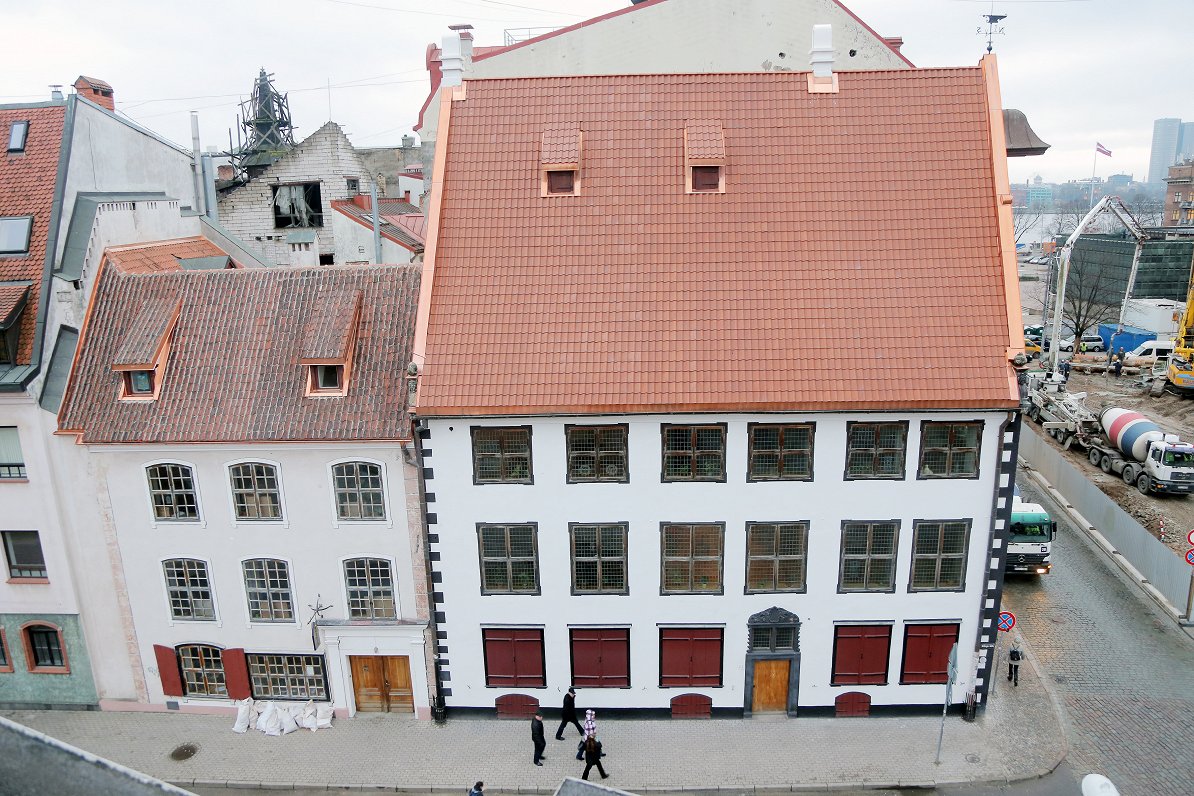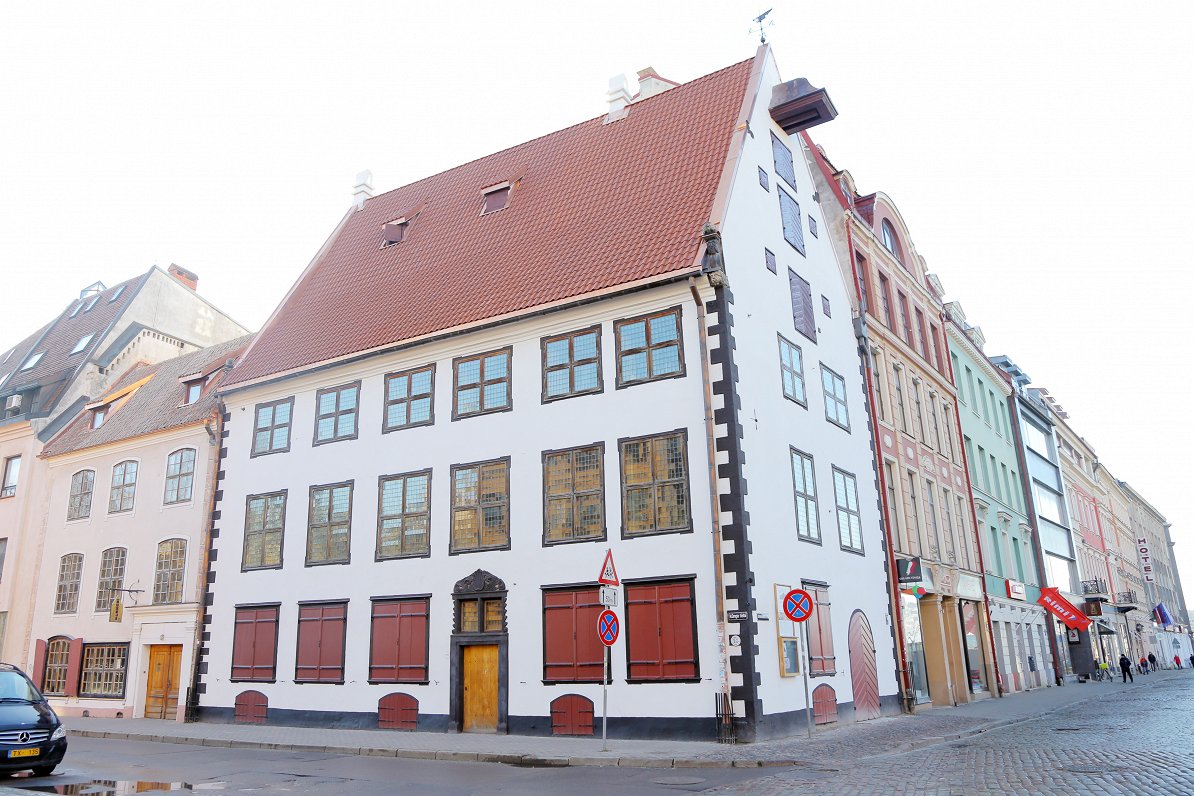Haus Mentzendorff
There was a time when crafts and “little delicious sins” from across the world were on offer at the Haus Mentzendorff (Mencendorfa nams/Mentzendorff house). Nowadays, it houses exhibition halls and is the home of a German-Latvian culture association.
Rīga, the capital of Latvia, has preserved features of the Hanseatic City it once was up to the present day. The luxurious guild and patrician houses, shaping the image of Old Rīga and harking back to the zenith of the Baltic metropolis, provide mute testimony of the influence that German merchants wielded in the past.
Just a couple dozen meters from the Town Hall Square, the Haus Mentzendorff testifies to the merchants’ former wealth. Visitors have the chance to explore the social culture of an urbanite in the Rīga of yore. As the home of the Domus Rigensis association, the house is likewise a place to meet and spend time together.
This white-plastered house, which sports a high span roof and impressive windows, was built by the well-off glassworker Jürgen Helm, who also fitted it with his workshop. There are still historical glass works on display in the basement vaults. Even now, visitors can sometimes observe glassworkers engaged in their craft.
Later on, this well-preserved building, which has several floors for storage and a steep gable wall with lifting gear, would serve multiple purposes and change hands a number of times. It is named after the Mentzendorffs, a merchant family and the last owners of the house. They lured people to the former Sünderstraße (currently: Grēcinieku iela, or the Sinners' Street) with candies and other treats, such as coffee, Swiss chocolate and hard liquor.

But in 1939, like the other Baltic Germans, the Menztendorffs were forced to leave their homeland, being relocated to Poland. This is because all the people that the Nazis, for reasons of propaganda, called ‘Baltendeutsche’ instead of the common ‘Deutschbalten’, were called “back to the Reich” by Adolf Hitler as per the secret pact with Joseph Stalin. In the Soviet era, too, memories of the Baltic German past were considered taboo due to political reasons.
After the end of the Second World War, communal apartments were set up inside the historic building, with esteemed railway workers living there. Later the building was uninhabited and left to deteriorate. Only in the late 1980s was it restored – upon the initiative of the Rīga city – and opened up as a museum after Latvia regained its independence in 1991.
Currently, top-floor rooms offer visitors a look at the daily life of a Baltic German patrician family, as it was 300 years ago. In addition to the store premises, the kitchen, guest saloon, a “poet’s room” and a “maiden’s room” the apartment also features a dance hall and family chapel. The original ceiling and wall paintings have been preserved. Each month, a different exhibition is on show in the spacious attic.
Since 1992, the Haus Mentzendorff accommodates the Baltic German-Latvian center, created upon the initiative of architect Pēteris Blūms. The Domus Rigensis (from the Latin for “Rīga house”) culture association was established concurrently. By now it has more than 200 members from Germany and Latvia. The numerous events held by the association serve as a reminder of the shared Baltic German-Latvian heritage. The annual Domus Rigensis Days are the association’s most important event.
The German Traces series was first published as part of the Goethe Institut in Rīga project “German Footprints in Latvia” ("Vācu pēdas Latvijā" www.goethe.de/vacu-pedas). The linked mobile application "German Footprints in Latvia" can be downloaded at www.ej.uz/vp-iOS and www.ej.uz/vp-Android.



























